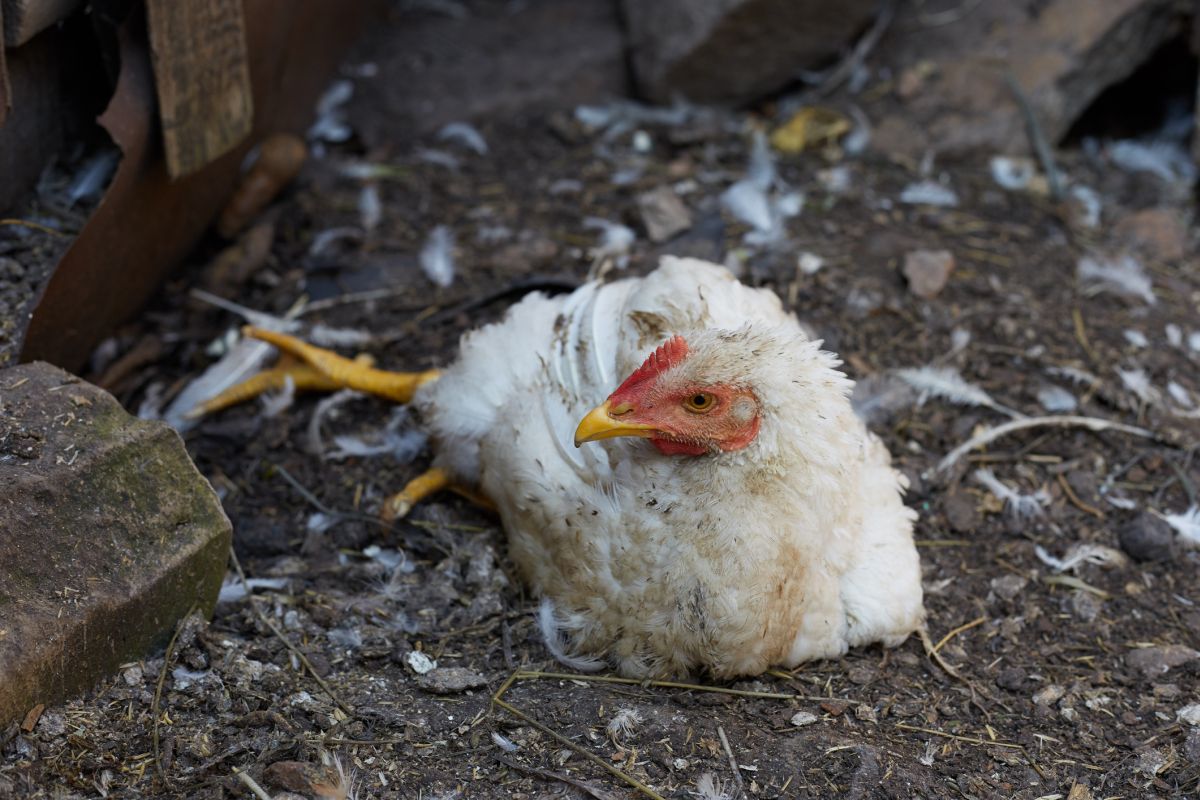Marek’s disease (also known as Mareks disease or fowl paralysis) is a common disease for chickens. If you’re raising chickens, it’s a good idea to be aware of the health concerns they might face. So, here is some information on Marek’s disease so you can keep your flock safe.
What is Marek’s Disease?
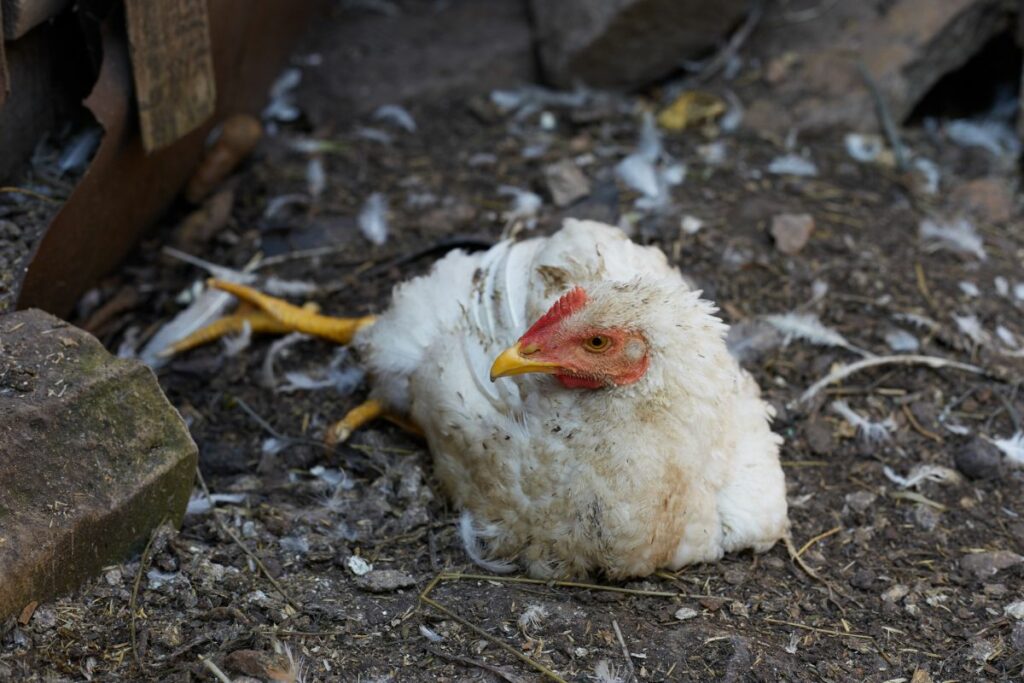
Marek’s disease is a contagious viral disease caused by a herpes virus. It’s most commonly associated with a chicken becoming paralyzed in their legs.
Over 90% of chickens that get sick from this virus die. Sadly, it isn’t a treatable disease, but there are lots of ways to prevent it. So, it’s good for chicken keepers to research it before their birds start showing symptoms.
Chickens of all ages can be harmed by Marek’s disease, but young birds are the most susceptible. It can also infect other birds, such as quails, turkeys, and pheasants. Luckily, Marek’s disease in humans and other mammals isn’t dangerous.
What Causes it?
An alphaherpesvirus with lymphotropic properties leads to Mareks disease in chickens. It takes over beneficial cells to distribute the virus across the bird’s body and create infected areas internally.
There are currently six mutations of the virus, and all of them have different levels of severity. Some are benign while others are likely to cause death.
How is Marek’s Disease Spread?
Whenever a large group of young chickens are raised together, the virus is likely to spread. If one chicken is infected, the virus can quickly spread to all unvaccinated chickens in the flock. Even if a chicken doesn’t experience illness from the virus, they can still pass it on to other birds.
The virus can be passed through dust and feathers floating in the air. It can remain in an area for months at room temperature, and chickens will get infected when they breathe it in. However, hens do not pass on the virus to their chicks.
Chickens can ingest the virus in many ways, such as if they pick at each others’ feathers or inhale the virus when it floats in the air. The virus may be able to blow in the wind for up to three miles from its source. So, even if none of your chickens have had the virus before, they could still get infected if not properly protected.
Marek’s Disease Chickens Symptoms
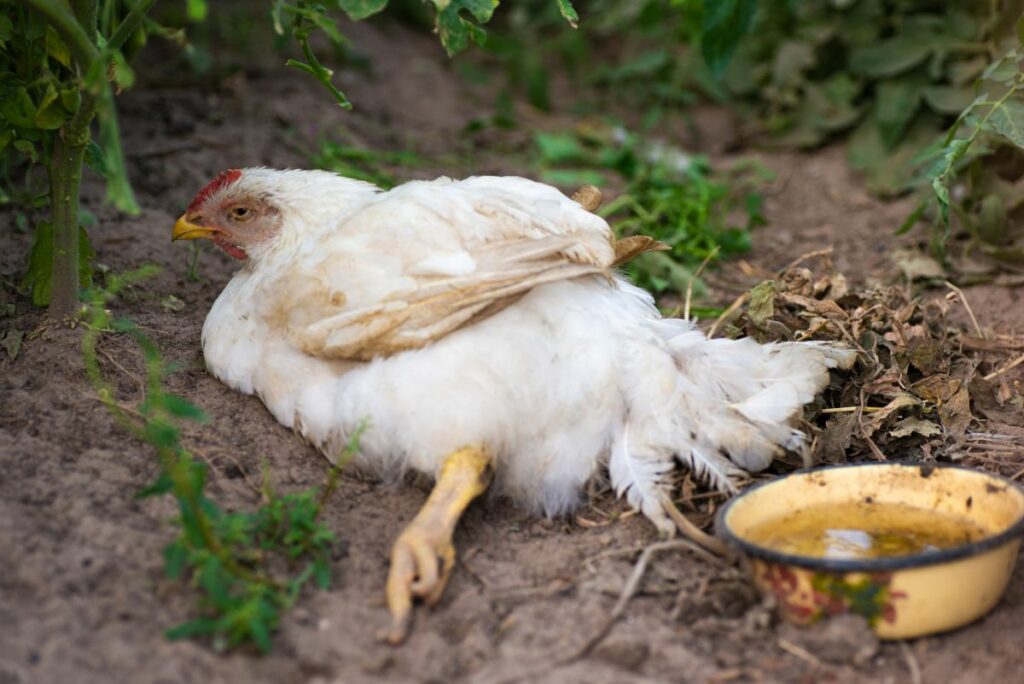
The Mareks disease symptoms can vary based on the type of virus your chicken gets and how they’re affected by it. Here are a few common symptoms:
- Paralysis near legs, wings, and/or neck
- Weight loss
- Loss of appetite
- Vision problems
- Irregular pupils
- Rough skin around feather follicles
- Dehydration
There are four main types of Marek’s disease: neurological, visceral, cutaneous, and ocular. Each one appears differently in chickens, but if your bird seems unwell, it’s always a good idea to take them to the vet.
Neurological
Neurological is the type of Marek’s disease that most keepers are familiar with. The virus attacks the bird’s nervous system, which can cause them to lose control of their body, resulting in paralysis, tics, and torticollis.
Chickens who experience this type of disease may face weakness, a pale comb, decreased appetite, diarrhea, respiratory issues, and difficulties walking. There’s a high mortality rate for chickens who get this disease, and chickens who survive may still have balancing problems after.
Visceral
Visceral Marek’s disease leads to tumors inside the chicken’s body. The tumors can occur on many major organs like the heart, lungs, and liver. Sadly, many of these chickens die before their keepers realize something is wrong.
A few symptoms associated with this form are weight loss, loss of appetite, diarrhea, weakness, and depression.
Cutaneous
This type of Marek’s disease leads to skin and feather problems. The virus infects the chicken’s feather follicles and causes them to get swollen. Their skin and feather follicles may redden and form crusty scabs. If the bird sheds its feathers and dander before the virus harms them, they may not experience any infection.
Ocular
With this type, your chicken’s eyes will be the most at risk. The chicken’s eye appearance will change, such as having a duller iris or irregularly shaped pupils. Eventually, it could lead to vision impairment or blindness. While these symptoms are difficult for chickens to live with, a bird can live for several years with ocular Marek’s disease.
Marek’s Disease Treatment Options
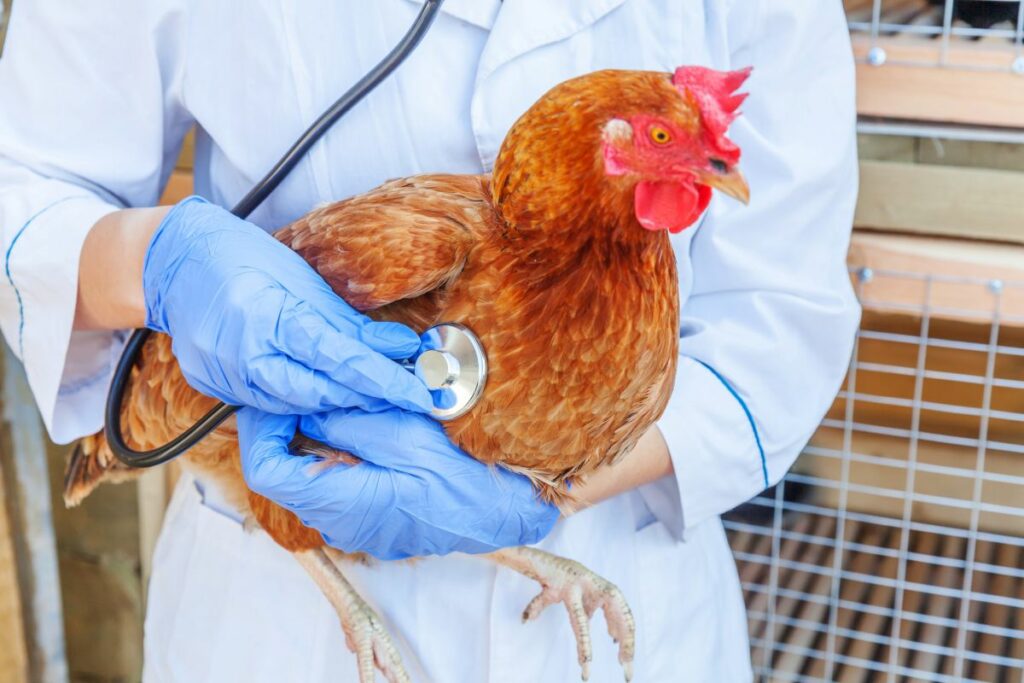
Unfortunately, there is no known treatment for Marek’s disease. Many chickens pass away after showing symptoms, but some will be able to overcome it. Yet, even if a chicken recovers, they will be a life-long carrier of the virus.
If you believe your chicken has this contagious disease, separate them from the rest of the flock and contact your vet. A vet can help you determine if the symptoms are related to an alphaherpesvirus, and they can give you advice on what to do next.
A good way to help a Marek’s disease chicken is by feeding them a formula with extra protein, such as a chick feed with 20% protein. Extra protein will help them maintain a healthy weight. Mixing the feed with vitamin enhanced water can also make it easier for the chicken to digest.
Keep the Mareks disease chickens clean and warm. If a chicken is paralyzed, they’ll need to be cleaned more often. Even though you will want your chicken to survive, it’s important to consider their quality of life. Some chickens will survive, but will suffer for the rest of their lives. So, you may need to make a difficult decision in that scenario.
Preventing Marek’s Disease in Chickens
Since there’s no treatment for this disease, it’s a good idea to prevent it as much as possible. Here are a few tips for how to avoid facing this ailment.
Vaccinate Your Flock
Vaccines are the most effective way to keep your chickens safe. Baby chicks can be vaccinated at only a day old, which can lessen the risk of them picking up all sorts of viruses. Once a chick is vaccinated, it’ll take about 4 to 7 days for the vaccine to be fully effective, so keep them away from birds other than their siblings.
If you buy chicks that aren’t vaccinated, there are still plenty of vaccine options. The most convenient one is vaccinating them from home, but that’s also the least effective option. You can talk to your vet to find out how to get the best vaccines for your chicks.
Like all vaccines, the Marek’s disease vaccine isn’t 100% effective. However, if a vaccinated chicken gets Marek’s disease, the symptoms will be much less severe and your bird will be likely to survive.
Keep the Coop Clean
While your chicken should be vaccinated, additional methods can help make them even safer. Keeping the chicken coop as clean as possible is a great way to prevent all diseases. Remove dirt, dust, feathers, and dander from the coop regularly to prevent your birds from inhaling viruses. Having a coop with good ventilation also helps prevent respiratory diseases.
You should do casual cleaning regularly, but you should also do a deep cleaning at least every six months. Deep cleaning should include spraying down all the surfaces of the coop, including the walls. You may need to move your chickens to a temporary coop for a day or two while you thoroughly clean every area.
Avoid Bringing in Contaminated Objects
A lot of times, we carry harmful items on our clothes and belongings without realizing it. So, if you ever visit a place that has other birds, wash your hands, clothes, and shoes before interacting with your own flock. Then, you won’t accidentally pass a virus to your birds.
Quarantine New Chickens
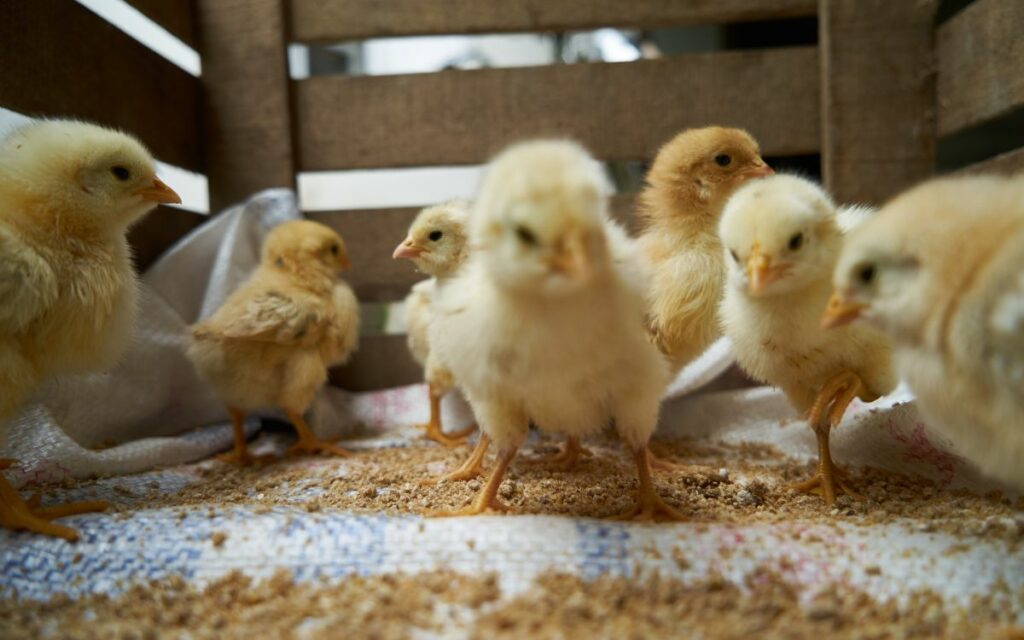
If you add new birds to your flock, it’s a good idea to keep them separate from the other chickens for at least 30 days. Even if they seem healthy, they could be carrying viruses without showing symptoms.
Before you buy a new chicken, it can also help to assess the living situations of those birds. If their space looks clean and well-maintained, it’s less likely that they’ll be sick. Yet, it’s always better to be safe than sorry.
Frequently Asked Questions
If you have a flock of chickens, it’s a good idea to get all your Marek’s disease questions answered before a chicken gets infected. Here are a few common questions.
It’s possible for chickens to survive Marek’s disease, but it’s rare. Most infected chickens will die from complications related to the disease at some point, and even chickens who recover will still have to live with some long-term effects. So, it’s best to prevent this disease before your birds can come into contact with the virus.
Yes, vaccinated chickens can still get diseases, but the symptoms won’t be nearly as severe. If your chicken is vaccinated, they’ll be more likely to have a good quality of life after facing this disease. Yet, if a vaccinated chicken doesn’t get sick from the virus, they can still carry it and pass it on to unvaccinated birds.
The progression of Marek’s disease varies based on the symptoms and severity. Most chickens will develop illness within 3 to 4 weeks, and most deaths occur when the chickens are between 12 and 24 weeks old. Yet, it’s also possible for chickens to carry the virus without experiencing severe illness until later in life. So, it all depends on the individual bird.
Keep Your Chickens Safe!
Marek’s disease is a severe ailment that can’t be treated, so it’s important to take action before you flock experiences it. A Marek’s disease vaccine is the best way to keep your chickens safe, but there are a few other preventative measures too.
So, get on top of your chicken’s health from day one to ensure that you never have to deal with the extreme symptoms and risks that this disease causes.
